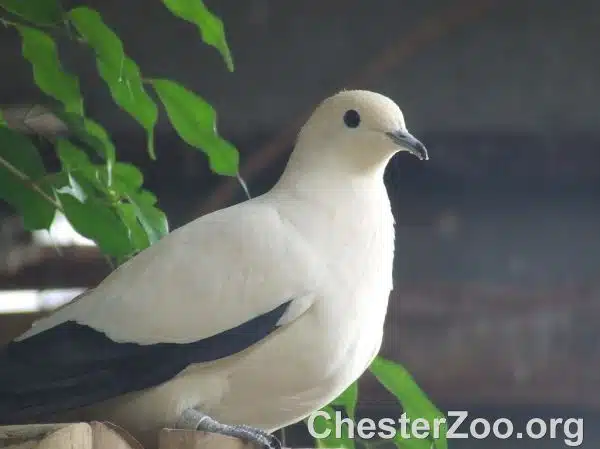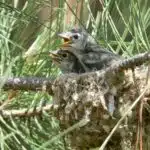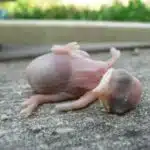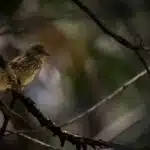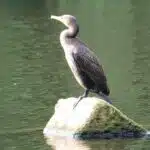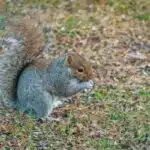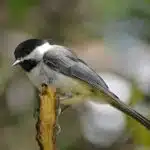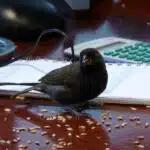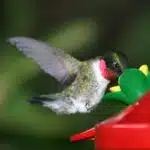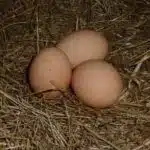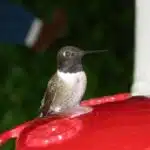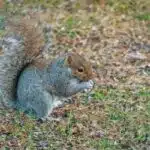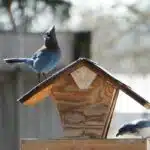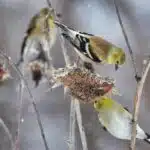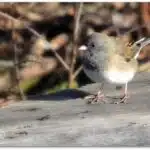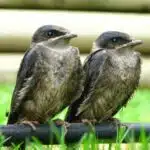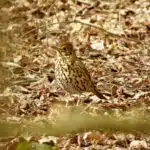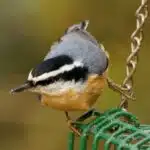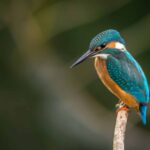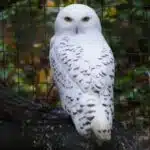Birds are fascinating creatures that have captured the attention of humans for centuries. One of the most intriguing aspects of their lives is their reproductive behavior, including how they mate. Understanding the intricacies of avian mating rituals not only provides insight into these unique creatures but also aids in conservation efforts and captive breeding programs.
Birds have evolved a diverse range of mating strategies that vary across species, with some exhibiting monogamy while others are polygamous. The process of bird mating involves several stages, including courtship displays and behaviors, copulation, and fertilization. These stages are often highly ritualized and involve intricate dances, vocalizations, and displays of plumage. By exploring the mechanisms behind avian mating behaviors, we can gain a deeper understanding of the natural world and work towards preserving it for future generations.
Avian Reproductive Behavior
Avian reproductive behavior is a complex and fascinating field of study that encompasses many aspects of the anatomy, physiology, and behavior of birds. In order to understand how birds mate, it is important to first examine their reproductive anatomy. Birds have evolved a variety of adaptations for successful reproduction, including unique genitalia and specialized mechanisms for fertilization.
Breeding seasonality is another important factor in avian reproductive behavior. Many bird species exhibit seasonal breeding patterns that are influenced by environmental cues such as temperature, rainfall, and daylight hours. These cues can trigger hormonal changes in birds that stimulate mating behaviors and egg production.
Overall, avian reproductive behavior is a dynamic and multifaceted subject that requires careful observation and analysis. By understanding the reproductive anatomy of birds and the factors that influence breeding seasonality, we can gain valuable insights into the fascinating world of avian mating behaviors. In the subsequent section about sexual selection in birds, we will explore how these behaviors are shaped by evolutionary forces such as natural selection and sexual selection.
Sexual Selection In Birds
As mentioned earlier, birds have a unique way of mating. It is not just the physical act of mating that sets them apart from other animals, but also the elaborate rituals they perform before and after mating. These rituals are a part of sexual selection, which is an important aspect of avian biology.
Sexual dimorphism, or the difference in physical appearance between males and females, plays a crucial role in bird mating rituals. In many bird species, males have brightly colored feathers or elaborate courtship displays to attract females. This is because females are generally more selective when it comes to choosing a mate. They want a partner who will provide good genes for their offspring and protect them from predators. Males, on the other hand, are more concerned with attracting as many mates as possible to increase their chances of passing on their genes.
The specific mating rituals vary widely among bird species. Some birds, like swans and penguins, form monogamous pairs that mate for life. Other birds engage in elaborate courtship displays that involve dancing, singing, and even gifts of food or nesting materials. Whatever the method may be, these rituals are all aimed at one goal – finding a suitable mate to ensure successful reproduction. In the subsequent section we will explore different types of avian mating strategies that birds use to achieve this goal.
Types Of Avian Mating Strategies
Avian mating rituals are diverse and complex, varying greatly among species. These rituals can include elaborate displays of plumage, vocalizations, and physical movements. The purpose of these rituals is to attract a mate and demonstrate fitness for breeding. In some species, males will offer gifts of food or nesting material to females as part of the courtship process.
Breeding success in birds often depends on the effectiveness of their mating strategies. For example, polygamous species may have more opportunities to reproduce but may also face greater competition among males for mates. Monogamous species, on the other hand, may have fewer chances to mate but are more likely to form long-lasting pair bonds that enhance their reproductive success.
Overall, avian mating strategies are shaped by a range of environmental and social factors including habitat availability, predation pressure, and social structure. As scientists continue to study bird behavior and biology, we may gain even greater insights into the complexities of avian mating and breeding patterns.
Transition: While some bird species engage in polygamous mating practices, others form monogamous pair bonds for life. Let’s explore how these monogamous bird species navigate the challenges of finding and maintaining a lifelong partner.
Monogamous Bird Species
Monogamy is a mating system in which two individuals pair up and remain together for an extended period. This behavior is observed in various bird species worldwide. Examples of monogamous bird species include the bald eagle, swans, and many songbirds like the bluebird.
Mate selection in monogamous species is a complex process that involves several factors such as availability, compatibility, and fitness. Birds often form pairs with individuals who have similar traits, including physical appearance and vocalizations. The process of mate selection ensures that compatible individuals come together to maximize reproductive success.
The benefits of monogamy include sharing parental care duties, defending territories, and reducing predation risks. In monogamous pairs, both parents are actively involved in raising offspring by providing food, protecting them from predators and teaching them life skills. This division of labor allows for effective use of resources and enhances the chances of survival for their offspring. Overall, monogamy has evolved as an efficient reproductive strategy that maximizes individual fitness while ensuring successful reproduction.
As we have seen above, birds exhibit unique mating behaviors that vary across different species. While some birds prefer to form long-term bonds with one partner (monogamous), others opt for multiple partners (polygamous). In the next section, we will explore polygamy as a mating system amongst birds and how it differs from monogamy.
Polygamous Bird Species
Birds are fascinating creatures that have unique mating systems. Polygamous bird species, in particular, exhibit a mating system where males mate with multiple females. This system is prevalent in many bird species, including the red-winged blackbird and the sage grouse. In this system, male birds compete for access to females, and the female mate choice plays a significant role in determining which males will reproduce.
Polyandrous bird species are another type of mating system where one female mates with multiple males. This system is less common than polygamy but is observed in some bird species such as the jacana and phalarope. In these species, the female lays eggs in several different nests, and each male takes on parental duties for their brood.
Female mate choice plays an important role in both polyandrous and polygamous bird species. Females select mates based on specific traits such as physical appearance or song quality that indicate good genetic quality or health. Males must display these desirable traits during courtship displays to attract females successfully. Overall, understanding these mating systems can provide insight into avian biology and evolution.
Birds have intricate behaviors when it comes to courtship displays and behaviors that vary between species. Understanding these behaviors is essential to understand avian biology truly. From elaborate dances to beautiful songs, birds use a range of techniques to attract potential mates. These displays can also serve as indicators of good genes or health status for potential mates. As we delve deeper into this topic, we can discover how courtship displays have evolved over time and how they continue to shape modern-day bird behavior patterns.
Courtship Displays And Behaviors
Mating rituals in birds are highly diverse and unique. Courtship displays and behaviors are the means by which birds attract mates. These rituals can vary from simple to complex and can involve vocalizations, physical displays, and courtship dances.
Courtship dances are a common mating ritual among many bird species. These dances involve intricate movements that may showcase the male’s physical abilities or elaborate plumage patterns. Some species even create elaborate structures or nests as part of their courtship display.
Other mating rituals include vocalizations such as songs, calls, and mimicry. Male birds often use these sounds to attract females or defend their territories against other males. In some cases, males may even mimic the sounds of other bird species to deceive potential mates or competitors.
- Some bird species engage in synchronized dancing during courtship.
- Certain male birds offer gifts such as food or nesting material to females as part of their courting process.
- Many bird species engage in aerial acrobatics during courtship displays.
- The elaborate tail feathers of male peafowl (peacocks) are used in courtship displays to attract females.
These diverse mating rituals demonstrate the creativity and adaptability of birds when it comes to attracting mates. In the next section, we will explore another important aspect of avian communication: vocalizations and bird songs.
Vocalizations And Bird Songs
The vocalizations of birds are an integral part of their communication and mating. Different species of birds use different types of vocalizations to express different messages. These vocalizations range from simple calls and chirps to complex songs and melodies. Bird songs are an important part of mating behavior in many species, and can be used to attract potential mates or to signal territoriality. Vocalizations can also be used for communication between mates, for example through duets between a male and female. Variations in the type and structure of vocalizations can also be used to indicate the species, sex, and age of the bird. Vocalizations are essential to the survival of many bird species and are an important area of study in avian biology.
Types Of Vocalizations
Bird vocalizations are essential for communication and play a crucial role in bird behavior. Among these vocalizations, mating calls are highly important as they serve to attract mates and signal reproductive readiness. These calls can be heard throughout the breeding season and vary between species.
One type of mating call is the song, which is commonly associated with male birds. The song is a complex and structured sequence of notes that males use to attract females and defend their territory from other males. The song’s complexity varies depending on the species, with some birds having simple songs consisting of only a few notes, while others have more complex songs consisting of many notes and phrases.
Another type of mating call is the call note, which is a simpler vocalization used by both male and female birds during courtship. Call notes are shorter and less complex than songs but still play an important role in attracting mates. They are often used in conjunction with visual displays, such as posturing or feather fluffing.
In conclusion, bird vocalizations play a significant role in bird behavior, particularly during the breeding season when mating calls are essential for attracting mates. Mating calls come in various forms, including songs and call notes, each serving different purposes in the courtship process. Understanding these vocalizations can provide valuable insights into avian biology and help us appreciate the beauty of nature’s intricate communication systems.
Role Of Bird Songs In Mating
Bird songs serve a vital role in avian biology, particularly during the mating season. These vocalizations have evolutionary significance as they have been shaped by natural selection to convey important information about the fitness and quality of potential mates. Consequently, bird songs are crucial for attracting mates, defending territories, and competing with other individuals of the same species.
The communication purposes of bird songs vary according to the species. Some male birds use their songs to attract females by demonstrating their physical prowess or genetic quality. For instance, male songbirds with more complex and varied songs may be perceived as more attractive by females because they indicate higher cognitive abilities or better health status. Other species use their songs to establish territories or repel rivals by signaling dominance and aggression.
Overall, the role of bird songs in mating is critical for the survival and reproduction of avian populations. By understanding the evolutionary significance and communication purposes of these vocalizations, researchers can gain valuable insights into avian behavior and ecology. Moreover, appreciating the beauty and complexity of bird songs can inspire us to protect these magnificent creatures and their habitats for future generations.
Use Of Vocalizations For Communication
Vocalizations are not only important during mating season, but also play a crucial role in various communication functions among birds. These sounds can convey information about an individual’s location, identity, and intention. Through the use of vocalizations, birds can coordinate group activities such as foraging and predator alarms. Additionally, they can establish social bonds and maintain relationships within their flock or family.
The functions of bird vocalizations have evolved over time to adapt to different environmental factors and social contexts. Some species use calls to warn others about potential threats or predators, while other birds use songs to advertise their territory or attract mates. The complexity and variation of these sounds have developed through natural selection to ensure successful communication within a species.
Understanding the evolutionary significance of bird vocalizations can provide insight into the behavior and ecology of avian populations. By analyzing the structure and content of these sounds, researchers have been able to identify distinct dialects between different regions or groups of birds. This knowledge helps us appreciate the unique differences among bird populations while highlighting the importance of conservation efforts for protecting these diverse vocalizing creatures.
Displays Of Plumage
Birds use their feather coloration as a way of attracting mates. Male birds often have more elaborate and brightly colored plumage than females, which serves to catch the attention of potential mates. This type of sexual selection is driven by female preference for certain traits in males, and it has led to some of the most spectacular displays of color and pattern in the animal kingdom.
Feather coloration can also be an indicator of a bird’s health and fitness. For example, brighter colors may indicate that a male has access to high-quality food sources or is able to defend his territory against rivals. Females may use this information when choosing a mate, as it suggests that their offspring will inherit these advantageous traits.
The study of feather coloration and its role in mating behavior falls under the field of behavioral ecology. Researchers in this field aim to understand how animals interact with their environment and each other, and how these interactions shape behavior over time. By studying bird behavior and plumage patterns, scientists can gain insights into the evolution of sexual selection and other ecological processes that are essential for maintaining healthy populations.
Transition: Understanding the role that feather coloration plays in mating behaviors is just one piece of the puzzle when it comes to understanding how birds reproduce. In order to fully comprehend this process, we must also examine copulation and fertilization mechanisms used by different species.
Copulation And Fertilization
Copulation in birds is an essential part of the reproductive process, and typically involves clasping with the feet, bill-clapping and vocalizations. Nesting behaviour is also an important factor, as the birds will usually construct a nest before copulation or soon after. During copulation, the sperm of the male is transferred to the reproductive tract of the female in a process called insemination. Fertilization is then achieved when the egg is released from the ovary, and the sperm combines with the egg to produce an embryo. To ensure fertilization, some species of birds employ a technique called cloacal kissing, where the cloacas of the two birds are brought together. Lastly, once the egg is fertilized, the female bird is ready to lay the egg in the nest and the incubation process begins.
Copulation Mechanics
Birds have evolved unique reproductive anatomy that allows them to mate in different ways. Copulation, which is the physical act of mating, involves the transfer of sperm from males to females. During this process, birds use their cloacas (an opening used for excretion and reproduction) to exchange sperm. The male bird usually mounts the female and aligns their cloacas together, allowing for the transfer of sperm.
The copulation mechanics of birds depend on their mating rituals. Some species perform elaborate courtship displays that involve singing, dancing or presenting gifts to attract a mate. Once a pair has been established, they engage in copulation multiple times to increase fertilization success. In some cases, monogamous pairs may even mate for life.
Birds have developed various adaptations that facilitate successful copulation and fertilization. For example, some species have evolved specialized genitalia such as corkscrew-shaped penises or complex vaginal structures that help prevent unwanted sperm from entering the egg. Understanding these copulation mechanics is crucial for conservation efforts directed towards threatened bird populations as it can inform breeding programs and habitat management practices.
In summary, birds have unique reproductive anatomy that allows them to mate in different ways through copulation involving the transfer of sperm from males to females using their cloacas. Mating rituals play a significant role in determining how birds mate; some species require elaborate courtship displays while others form monogamous bonds for life. Birds also possess various adaptations that aid in successful copulation and fertilization. These findings provide valuable insights into avian biology and can be useful in conservation efforts aimed at preserving threatened bird populations worldwide.
Nesting Behaviour
Birds display a wide range of nesting behaviours that are crucial to their reproductive success. Once copulation and fertilization have occurred, birds must select a suitable location to lay their eggs and care for their young. The role of hormones in this process is significant, as they play a vital role in regulating the behaviour of birds during nesting.
Nest site selection is a critical aspect of bird nesting behaviour, as it determines the survival and growth of their offspring. Hormones such as estrogen and testosterone play essential roles in this process by influencing the behaviour of birds during nest site selection. These hormones can affect the size and structure of nests, as well as the location where they are built.
In addition to nest site selection, hormones also regulate other aspects of bird nesting behaviour such as incubation and parental care. Incubation is an essential part of bird reproduction; it involves keeping eggs warm until they hatch. Hormones such as prolactin and corticosterone help regulate incubation by promoting egg turning and reducing stress levels in parents. Overall, understanding the role that hormones play in bird nesting behaviour is crucial for conservation efforts aimed at preserving threatened bird populations worldwide.
Fertilization Process
After copulation, the fertilization process begins in birds. This process involves the competition of sperm from different males to fertilize the female’s eggs. The success of this competition depends on various factors, such as the number and quality of sperm produced and deposited by each male, the timing of mating, and the female’s reproductive tract’s structure.
Birds employ various mating rituals that help them attract a mate and ensure successful fertilization. These rituals can be elaborate displays of physical prowess or vocalizations that signal readiness to mate. Hormones also play a crucial role in these rituals by regulating sexual behaviour and facilitating copulation.
Understanding the fertilization process is vital for conservation efforts aimed at preserving threatened bird populations worldwide. Factors such as habitat loss, pollution, and climate change can significantly impact bird reproduction rates by affecting their ability to find mates, compete for fertilization success, or successfully incubate and care for their offspring. As such, avian biologists continue to study bird behaviour and physiology to develop effective conservation strategies that support healthy bird populations around the world.
Internal Fertilization In Birds
Birds are known for their unique reproductive anatomy, which allows them to mate and reproduce successfully. Unlike mammals, birds do not have external genitalia; instead, they have a cloaca, a single opening that serves as the exit for both feces and reproductive fluids. During mating, the male bird will press his cloaca against the female’s cloaca, allowing sperm to be transferred from the male to the female.
Internal fertilization in birds is an important process that ensures successful reproduction. However, it is not always guaranteed that all of the sperm transferred during mating will fertilize an egg. This is due to sperm competition, which occurs when multiple males mate with a single female. The competition between sperm from different males can lead to a higher chance of fertilization success for some males over others.
Reproductive anatomy and sperm competition play crucial roles in internal fertilization in birds. Understanding these processes can provide insight into bird behavior and help conservationists develop strategies to protect vulnerable species. In the next section, we will explore how birds lay their eggs and care for their young once they have hatched.
Egg-Laying And Incubation
Female birds have specialized anatomy that enables them to lay eggs, including an oviduct, shell gland and uterus. The egg-laying process involves the female bird passing the egg through her oviduct and adding a protective calcium carbonate shell from her shell gland. The female bird can then lay the egg in a nest, where she will then incubate it for an incubation period which varies in length depending on the species. Many birds incubate their eggs for around two weeks, but some species have incubation periods of up to a month. The female bird will sit on the eggs to keep them warm and safe from predators, and will also turn them regularly to ensure the embryo inside the egg is not stuck to the shell.
Female Bird Anatomy
When it comes to bird egg laying and incubation, understanding the female bird reproductive cycle is crucial. As avian biology writers, we know that the anatomy of female birds plays a vital role in their mating and breeding behaviors. The female bird’s reproductive system consists of an ovary, oviduct, and cloaca.
The ovary is responsible for producing and releasing eggs during the breeding season. It is located on the left side of the body cavity and can mature up to 10-15 follicles at a time. Once fertilized, one of these follicles will become an egg while the others are reabsorbed by the body.
The oviduct is where the actual egg-laying process happens. This muscular tube runs from the ovary to the cloaca and has five different sections: infundibulum, magnum, isthmus, uterus or shell gland, and vagina. Each section has a specific job in forming and laying an egg. From there, it will travel through the cloaca before being laid outside of her body.
In conclusion, understanding female bird anatomy is essential when discussing bird egg laying and incubation. With its complex reproductive system consisting of an ovary, oviduct, and cloaca – every step in this process plays a vital role in ensuring healthy offspring for future generations.
Egg-Laying Process
Understanding the egg-laying process is a critical aspect of avian biology. The female bird’s reproductive system goes through a series of intricate processes before producing an egg that is ready to be laid. Eggshell formation, for instance, involves a complex interplay of minerals and proteins, which are regulated by hormones such as estrogen and progesterone.
The hormonal regulation starts with the release of follicle-stimulating hormone (FSH) from the pituitary gland, prompting the ovary to begin maturing follicles. The largest follicle will eventually release an egg into the oviduct, where other sections are responsible for adding different components to form the complete egg. The magnum adds albumen or the egg white, while the isthmus secretes two shell membranes that surround the albumen.
The last section of the oviduct is called the uterus or shell gland, which produces a hard outer layer that protects and supports the developing embryo. Once all components have been added and formed together, contractions in the uterus force it out into the cloaca before being laid outside of her body. Understanding these processes provides insight into how birds lay eggs and how we can better support their breeding efforts in captivity or conservation programs.
Incubation Periods
After laying an egg, the female bird goes through another critical stage in reproduction – incubation. The egg must be kept warm and protected until it hatches into a chick. Incubation is a fascinating process that involves not only temperature regulation but also humidity control and turning of the egg to ensure proper development. In this subtopic, we will discuss the average duration of incubation periods in different bird species and how environmental factors can affect them.
The average duration of incubation periods varies depending on the bird species. Generally, smaller birds have shorter incubation periods than larger ones. For example, a chicken egg takes about 21 days to hatch, while an ostrich egg takes around 42 days. Other factors that can affect incubation periods include temperature, humidity, and turning frequency. These external factors can alter the developing embryo’s metabolic rate and ultimately impact its hatching time.
Environmental factors play a crucial role in determining the success of incubation periods. For instance, when eggs are exposed to extreme temperatures or fluctuations in temperature during incubation, they may develop defects or fail to hatch altogether. Similarly, low humidity levels can cause dehydration and reduce hatchability rates. Furthermore, improper turning frequency can lead to malformations or death of the developing embryo. Therefore, understanding how these environmental factors influence incubation is essential for successful breeding programs or conservation efforts aimed at increasing avian populations.
Parental Care And Nesting
After laying eggs, birds engage in mating behavior to fertilize them. The process of bird mating involves both males and females working together to ensure successful reproduction. Mating rituals can vary between species, but generally involve courtship displays and vocalizations.
Once a pair has mated, the female will typically lay her eggs in a nest that the male has helped build. This is where parental care begins. Both parents take turns incubating the eggs and keeping them warm until they hatch. After hatching, the chicks are dependent on their parents for food and protection.
Parental care is crucial for the survival of young birds. Feeding and protecting their offspring requires a lot of energy and time from both parents. The location of the nest also plays a significant role in ensuring successful reproduction. Birds will often choose nesting sites that provide adequate shelter, food sources, and protection from predators. Building a sturdy nest that meets all these requirements can be challenging for some species.
In summary, bird mating involves complex courtship behaviors followed by egg-laying and parental care: feeding and protecting offspring while building an appropriate nesting site in an ideal location. These challenges must be overcome to ensure successful reproduction for future generations of avian species. However, there are additional obstacles that birds face in their quest for successful reproduction, such as habitat loss and climate change, which we will explore in the next section.
Challenges To Avian Reproduction
Avian reproduction is a complex process that involves various challenges, including climate change and habitat loss. As temperatures continue to rise, birds need to adjust their breeding schedules to coincide with the availability of resources required for breeding. This can lead to mistimed egg-laying or hatching, which can ultimately affect the survival of offspring.
Habitat loss also poses a significant threat to avian reproduction. Deforestation and urbanization have led to the destruction of natural habitats, reducing the availability of nesting sites and food sources for birds. This can result in reduced breeding success and population declines, ultimately affecting the entire ecosystem.
Furthermore, pollution and other human activities can negatively impact avian reproduction by altering hormone levels in birds or exposing them to toxic substances. These factors can lead to reproductive abnormalities, such as decreased fertility rates or deformities in offspring. It is crucial that we address these challenges and work towards mitigating their effects on avian populations.
- Climate change leading to mistimed egg-laying or hatching
- Habitat loss reducing availability of nesting sites and food sources
- Human activities leading to reduced fertility rates or deformities in offspring
As we continue to explore the challenges facing avian reproduction, it is essential that we consider the impacts of human activities on bird populations. From habitat destruction to pollution, our actions have far-reaching consequences on the ecosystems around us. Understanding these impacts is crucial if we are to take steps towards protecting these vital species for future generations.
Human Impacts On Avian Mating
Human activities have a significant impact on avian mating patterns. The loss and fragmentation of habitats due to human development often lead to the decline in bird populations, as it limits their ability to find mates. Habitat destruction can cause birds to mate with close relatives, leading to inbreeding, which can result in genetic abnormalities and reduced reproductive success.
Human-wildlife conflict also affects avian mating patterns. One example is the felling of trees that provide nesting sites for birds. As a result, some species have to adapt by using alternative sites such as buildings or artificial nest boxes, which may not be suitable for their needs. Additionally, human activities such as hunting and poaching can remove males from breeding populations, leading to skewed sex ratios and reduced breeding success.
The effects of human impacts on avian mating are far-reaching and require urgent attention. Conservation efforts should focus on preserving critical habitats for threatened species and restoring degraded habitats to support healthy populations. Measures such as the creation of wildlife corridors and protected areas can help reduce habitat fragmentation and promote gene flow between isolated populations. By prioritizing conservation efforts, we can ensure the continued survival of our feathered friends in an increasingly urbanized world.
As we move forward in our understanding of avian biology, it is clear that humans play a vital role in shaping the future of these magnificent creatures. In the next section, we will explore some conservation efforts that are currently underway to protect threatened bird species from extinction.
Conservation Efforts For Threatened Species
Human impacts on avian mating have significantly contributed to the conservation challenges faced by many bird species. As humans continue to encroach into natural habitats, bird populations are threatened by habitat loss, fragmentation, and degradation. These factors directly affect the breeding patterns and success rates of birds. The reduction in habitat size and quality can lead to increased competition for resources, reduced mate availability, and decreased genetic diversity.
One solution to these conservation challenges is habitat protection. Habitat protection involves preserving natural ecosystems, including nesting sites and feeding areas, that are essential for bird breeding success. Protected areas such as national parks, wildlife reserves, and sanctuaries provide safe havens for birds to breed without human interference. Additionally, habitat restoration efforts aim to improve degraded habitats by planting native vegetation, removing invasive species that compete with birds for resources, and restoring water sources.
Despite significant progress in habitat protection and restoration efforts for threatened bird species globally, several challenges remain. Limited resources allocated towards conservation efforts often limit the scope of projects aimed at protecting bird habitats. Climate change also poses a significant threat to bird populations as it alters their migratory patterns and affects their ability to find suitable breeding grounds. Furthermore, certain cultural practices such as hunting or capturing birds for trade continue to threaten endangered bird populations.
Markdown list:
- Destruction of natural habitats puts many bird species at risk of extinction
- Protected areas provide a safe haven for birds to breed without human interference
- Habitat restoration efforts improve degraded habitats by restoring water sources
- Climate change poses a significant threat to migratory patterns
In summary, conservation efforts play a vital role in protecting threatened avian species from the effects of human impacts on their mating behavior. While habitat protection has shown promise in preserving critical ecosystems essential for breeding success in birds, several challenges remain. Sustainable management practices that prioritize long-term conservation goals must be implemented alongside collaborative efforts between local communities and governments to ensure the continued survival of avian populations globally.
Conclusion
Avian reproductive behavior is a fascinating subject that has been studied extensively by scientists and ornithologists. Birds have a unique mating system that involves courtship, copulation, and parental care. Sexual selection plays an important role in the evolution of avian mating strategies, with males often competing for access to females and females choosing mates based on various factors such as physical traits, vocalizations, and nest building abilities.
There are two primary types of avian mating strategies: monogamy and polygamy. Monogamous bird species form pair bonds that can last for many years or even their entire lifetime. Polygamous bird species, on the other hand, may mate with multiple partners during a breeding season or over multiple seasons. In both cases, parental care is essential to the survival of offspring.
However, avian reproduction faces many challenges including habitat loss, climate change, hunting and poaching, and pollution. These challenges have led to declines in populations of many bird species around the world. Conservation efforts are necessary to protect endangered species and ensure that future generations can continue to enjoy these beautiful creatures.
As an anecdote to illustrate this point, consider the plight of the black-capped vireo. This small songbird was once abundant throughout its range but has suffered significant declines due to habitat loss from land development and cattle grazing. In recent years, conservation efforts have focused on restoring its habitat through reforestation projects and limiting grazing in key areas. As a result of these efforts, the black-capped vireo population has increased by over 50% since 1987.
In conclusion, avian reproductive behavior is a complex subject that requires careful study and conservation efforts to ensure the survival of our feathered friends. By understanding the unique mating strategies of birds and addressing threats to their habitats and populations, we can help protect these beautiful creatures for generations to come.
Image Credits
- “bird” by Chester Zoo (featured)

